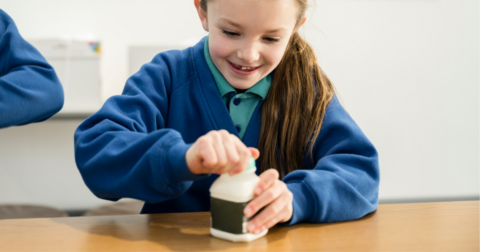News
SNAP Cuts in the Megabill, Explained
Policy•9 min read
Reported
Up to 80 percent of BIPOC students are unable to digest dairy, but schools are still not required to provide alternatives.

Reported • Meat Lobby • Policy

Words by Grace Hussain
On Wednesday the House voted to pass the Whole Milk for Healthy Kids Act with 330 representatives voting for the measure and 99 against. Touted as a bill aimed at increasing choice for students, it’s lacking one key facet: a non-dairy option, a critical alternative for BIPOC and other student populations that have high rates of lactose intolerance. Just two days prior, the House Rules Committee denied consideration of an amendment that would address this gap.
The milk choices offered in public schools have historically been determined by current U.S. Dietary Guidelines for Americans. The dietary guidelines are released every five years by the USDA and Department of Human and Health Services with the next edition due to be released in 2025. The committee behind each edition makes their recommendations based on a systematic review of nutrition research.
Current guidelines recommend that children between the ages of 2 and 18 drink fat-free and low-fat milk — the varieties currently available in schools. If enacted, the Whole Milk for Healthy Kids Act will add reduced fat and whole milk to school lunch menus.
Additional provisions of the legislation prevent the higher fat in the milk from counting against USDA guidelines requiring that no more than 10 percent of calories come from saturated fat. “The bill adds more unhealthy fat onto school lunch trays,” Andrew Binovi with Physicians Committee for Responsible Medicine told Sentient Media, calling the bill a “huge misstep by Congress.”
Federal dietary guidelines also suggest soy milk fortified with calcium and other vitamins as a healthy alternative to fat-free and low-fat milk, because “they are similar to milk and yogurt based on nutrient composition. ”Yet soy milk is absent from many school cafeterias and, unlike dairy milk, there is no federal program to reimburse schools for its purchase.
The bipartisan leadership of the Black, Hispanic and Asian and Pacific Islander caucuses proposed an amendment that would have allowed students to request a non-dairy milk alternative on Monday, but the House refused to even debate the measure.
The lack of a non-dairy milk option creates racial inequities, as up to 80 percent of BIPOC students are unable to digest dairy, compared to just 5 percent of Northern and Central Europeans.
Prior to the amendment, Representative Troy Carter (D-LA), along with a bipartisan group of 30 other congress members, sponsored H.R.1619, requiring schools to offer non-dairy milk alternatives. Like the amendment, the act would add soy milk as an option in cafeterias while allowing the USDA to reimburse schools for it, just like they do for cow’s milk. Despite roughly half of students likely suffering from an inability to digest lactose, the bill — and its Senate companion — has stagnated.
The Whole Milk for Healthy Kids Act still has a way to go. Now that the House has approved the bill, it will be sent to the Senate to undergo consideration in committee, and then for a vote by the full body.
Advocates for adding a non-dairy milk alternative to schools aren’t giving up yet, pointing to the work they’re doing to impact the Senate’s consideration of the bill. “If I learned anything in my route to the Olympic podium, it’s that you will lose far more times than you will win,” says Dotsie Bausch, Olympic Medalist and an advocate with Switch4Good. “This is far from over.”
This article has been updated.